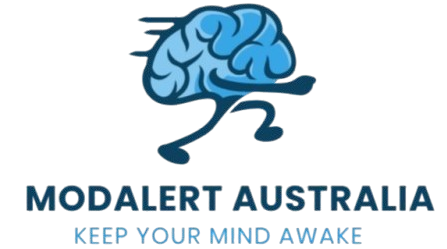Elderly Falling Asleep while sitting

Introduction
As people age, changes in sleeping patterns and overall health could result in excessive sleepiness during the day as well as falling asleep while at a desk. This is a common occurrence in older individuals and may be caused by a myriad of factors, which range from natural aging to health conditions.
Even though occasional drowsiness might seem innocent, regular episodes of non-intentional sleeping can be a sign of grave health problems and raise the chance of injuries. Knowing the reasons, dangers, and ways to mitigate them is vital for family caregivers and parents to protect the health and well-being of seniors.
Why Do Elderly People Fall Asleep While Sitting?
A variety of factors are responsible for older adults sleeping during the day, even when they are sitting. This includes:
Natural Changes in Sleep Patterns with Age
As they age and their sleeping patterns change, so do their sleeping habits. The most significant changes are:
- Reduced deep sleep (slow-wave sleep) – It can cause a lighter, disturbed sleep.
- Increased nighttime awakenings – Disrupts sleep continuity, causing daytime fatigue.
- Advanced sleep phase syndrome – seniors tend to be more tired at night and then wake up at a very early time.
This can lead to an insufficient amount of sleep during the night, making older adults more likely to fall asleep in the middle of the day.
Side Effects of Medications
A lot of elderly people take various medications, a few of which have sedative properties, such as:
- Benzodiazepines (e.g., Valium, Xanax) – For insomnia and anxiety.
- Antidepressants (e.g., Amitriptyline, Trazodone) – Can cause drowsiness.
- Antihistamines (e.g., Diphenhydramine) – In allergy and cold medicine.
- Pain medications (e.g., opioids, muscle relaxants) – Cause sleepiness.
They can build up within the body and cause sleepiness throughout the day.
Underlying Sleep Disorders
A variety of sleep disorders are more prevalent with age and can cause daytime sleepiness:
- Sleep Apnea – Sleep disruptions can lead to a lack of quality sleep.
- Insomnia – The inability to fall in a restful state can lead to fatigue.
- Restless Legs Syndrome (RLS) – Uncomfortable leg sensations disrupt sleep.
- Narcolepsy (rare but possible) – Sudden, uncontrollable sleep attacks.
Chronic Health Conditions
A variety of medical issues can lead to tiredness and insomnia in adults:
- Heart disease – Insufficient circulation decreases the oxygen supply, which causes fatigue.
- Diabetes – Blood sugar levels fluctuate and can result in energy crashes.
- Parkinson’s disease & Alzheimer’s – Sleep regulation is affected by neurologic changes.
- Chronic pain (arthritis, fibromyalgia) – Sleeping disorders can make it challenging to rest.
- Depression & anxiety – The effects of mental health problems can result in tiredness.
Poor Diet and Dehydration
• Low blood sugar (hypoglycemia) – Can cause sudden drowsiness.
• Dehydration – The reduction in blood flow to the brain causes the risk of fatigue.
• Vitamin deficiencies (B12, D, iron) – This can lead to a drop in energy levels.
Lack of Physical Activity
An active lifestyle can weaken muscles and decrease circulation. This makes older people suffer from fatigue.
Environmental Factors
- Dim lighting – It can stimulate melatonin release, which can induce sleep.
- Warm, cozy environments – Inspire unintentional sleeping.
When Falling Asleep Too Much Is a Problem
A few naps on occasion are acceptable. However, excessive restlessness could be a sign of:
Sleep Disorders
- Sleep Apnea – The pauses in breathing disrupt sleep, which can lead to daytime drowsiness.
- Narcolepsy – Sudden, uncontrollable sleep attacks.
- Insomnia – Sleeping or falling in bed all late at night.
Cognitive Decline
Dementia and Alzheimer’s can alter the normal cycle of sleep. Older people may be unable to sleep during the day but remain awake in the evening.
Heart or Lung Issues
The low levels of oxygen in the body due to the heart condition or COPD can make people fatigued.
Signs It’s More than Just Aging
- The conversation is interrupted by a sleepy snore
- The first thing you do when you wake up is gasp for air
- Confusion after naps
- The difficulty of staying awake, even after a good night’s rest
Risks of Falling Asleep While Sitting in the Elderly
Although occasional naps are regular and frequent, uncontrolled sleep sessions can present serious dangers:
Increased Fall Risk
- A sudden drowsiness could lead to a loss of balance and even falls and falls, which can be a significant reason for fractures (hip, wrist) among seniors.
- The tendency to snooze in chairs and when standing can increase the risk of serious accidents.
Missed Medications and Meals
Dosing in a sedentary manner or missing meals can exacerbate health issues.
Social Isolation
- The excessive amount of sleep can hinder involvement in social activities, which can lead to isolation and depression.
- Chronic fatigue causes seniors to stay away from family gatherings and leads to isolation.
Cognitive Decline
- A poor quality of sleep is connected to problems with memory as well as a greater chance of developing Alzheimer’s disease.
Medication Errors
- The effects of drowsiness can cause senior citizens not to remember or take medication correctly.
- Lack of sleep can weaken the immune system, which slows recuperation from illness.
Reduced Quality of Life
• Instant fatigue can limit the ability to be independent and enjoy everyday things.
Medications That Make Sleepiness Worse
A variety of common drugs can induce sleepiness:
- Medicines for blood pressure (Beta-blockers, Clonidine)
- Antidepressants (Amitriptyline, Trazodone)
- Pain relievers (Opioids, Muscle relaxers)
- Allergy medications (Diphenhydramine)
What to Do
- Examine medications with a physician.
- Find out if fewer doses or alternative options are available.
- Do not take sedatives in any course of time of day.
How to Prevent and Manage Excessive Daytime Sleepiness
Improve Nighttime Sleep Quality
- Maintain a consistent sleep schedule – You should go to bed at night and then wake at the same hour each day.
- Create a comfortable sleep environment – The room is calm, dark, and serene.
- Limit caffeine and alcohol – Both disrupt deep sleep.
- Avoid heavy meals before bed – It can cause indigestion, discomfort and even discomfort.
Encourage Physical Activity
- Light exercises (walking, stretching, Yoga) – Enhance circulation and increase energy levels.
- Outdoor exposure to natural light – It helps regulate the sleep-wake cycle.
Treat Underlying Sleep Disorders
- Sleep apnea – The use in conjunction with CPAP equipment or devices for oral use.
- Insomnia – Cognitive Behavioral Therapy (CBT) or other short-term sleep aids.
Optimize Diet and Hydration
- Healthy meals with protein, fibre, and good fats – Stabilize energy levels.
- Adequate water intake – Reduces fatigue due to dehydration.
How to Improve Sleep and Alertness
Daytime Habits
- Short walks – Even 10 minutes can improve circulation.
- Natural light exposure – The sun’s light regulates sleep patterns.
- Small, frequent meals – Prevents energy crashes.
Better Nighttime Sleep
- Avoid caffeine after noon.
- Limit the amount of liquid consumed before bedtime so that you can avoid trips to the bathroom.
- The bedroom should be kept cool and dim.
Napping the Right Way
- A short pause (20 minutes) helps boost your energy level without getting groggy.
- Take naps at night to help prevent nighttime sleepiness.
Home Safety Adjustments
Preventing falls
- Choose chairs with armrests that allow for better standing.
- Install lighting in hallways.
- Get rid of any loose rug.
Monitoring Devices
- Wearable alarms can detect prolonged periods of inactivity.
- Motion sensors warn caregivers that an elderly person hasn’t moved.
When to Seek Medical Help
See a physician if you are an older person:
- Sleeps in a flash without any warning (possible seizures or narcolepsy).
- Gasps or snores at midnight (signs of sleep apnea).
- Feels confused or has memory problems when the first day.
- There is no explanation for the weight loss or changes in mood (it could be a sign of thyroid or depression concerns).
Real-Life Examples of Managing Sleepiness
Sleep Apnea Diagnosis
The man, who was 78 years old, kept getting tired on his couch. An investigation into sleep patterns revealed that he had the presence of severe apnea. Through the help of a CPAP device, his energy was increased.
Medication Adjustment
A patient on several prescriptions always felt exhausted. The doctor adjusted her medications and reduced her tiredness.
Structured Routine
A former teacher snoozed a lot. The family she was with encouraged walks in the morning as well as set eating times, which allowed her to stay up for longer.
Conclusion
The habit of sitting while sleeping is widespread in older individuals, typically due to changes in sleep caused by age, medications as well as different illnesses. Although occasional napping is typical, excessive sleeping during the day could signal a major problem and could increase the likelihood of falling.
By improving the quality of sleep, encouraging physical activity in addition to dealing with health problems, caregivers are able to help older people to stay healthy and achieve a greater quality of life. If you are experiencing excessive sleepiness, an evaluation with an expert doctor is necessary to identify if you are at risk of medical issues.
With the right interventions by taking the correct steps, older people can experience more energy, greater independence, as well as overall wellness.





